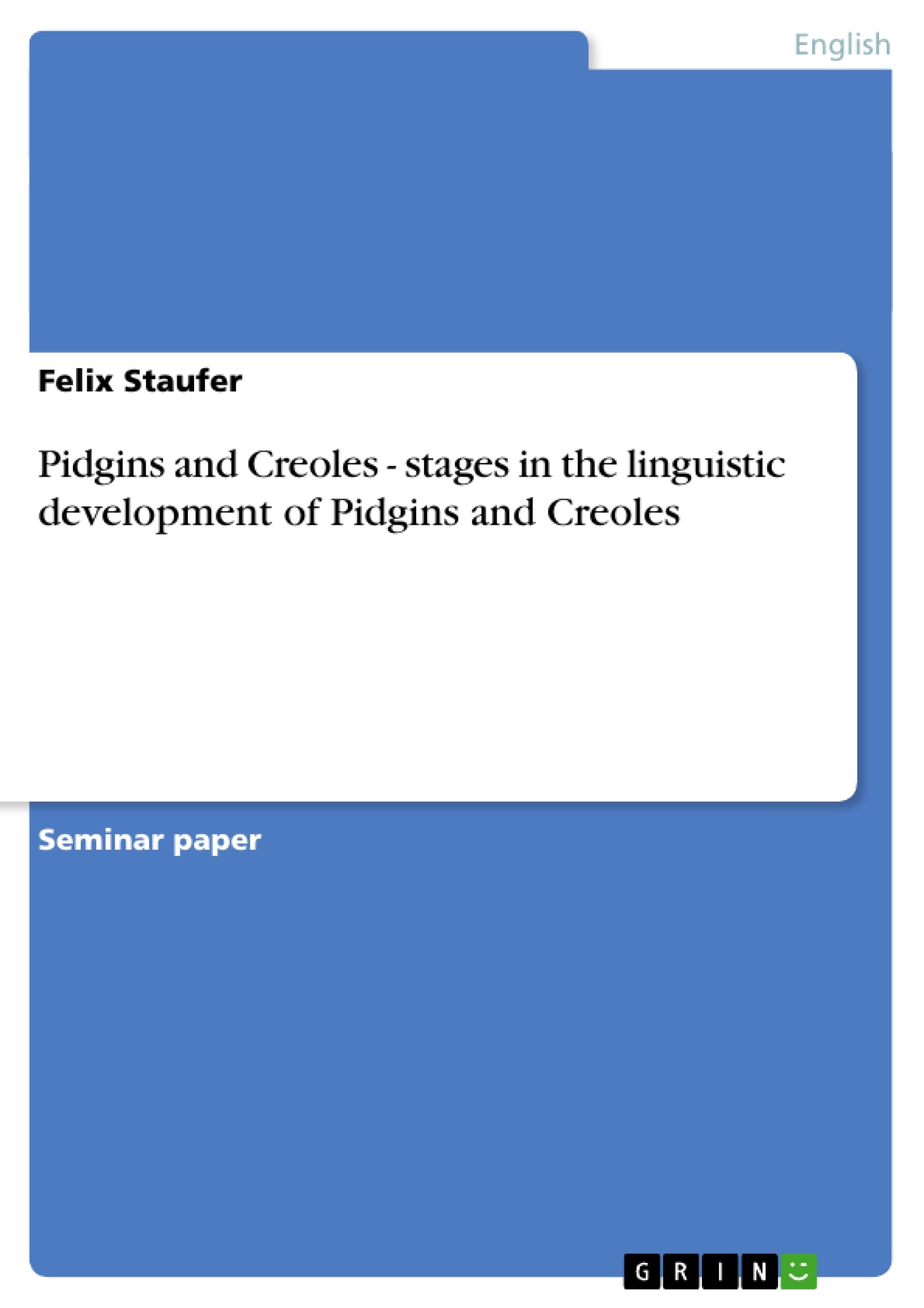To offer a good reason for talking about the stages in the linguistic development of Pidgins and Creoles one should take a close look at the following statement:
I think it can easily be argued that the fundamental problem for linguistic theory is to understand…how linguistic structures evolve, come into being and change into new (sub) systems and thereby to learn what the true nature of language is.
Talking about the different stages to elucidate, “the true nature of language” requires the knowledge of some basic information and definitions, especially of the terms Pidgin and Creole:
Pidgins are examples of partially targeted second language learning and second language creation, developing from simpler to more complex systems as communicative requirements become more demanding. Pidgin languages by definition have no native speakers – they are social rather than individual solutions – and hence are characterized by norms of acceptability.
But these definitions aren’t sufficient for taking a critical look at Pidgins and Creoles. Besides several minor problems, there are two major or main problems that are fundamental to this topic.
The first one is the continuing lack of longitudinal studies. This lack requires the reconstruction of “non-documented or ill-documented aspects of language development” (cf. Mühlhäusler, 1997). This reconstruction is mostly based on the idea of an uniformitarian development of language. But just like history is no steady development in one direction, the development of language isn’t either. The attempts of reconstruction do not take into consideration discontinuities in the development of language including progressive and regressive phases.
The second major or main problem is that one has to make some concessions. “These include separating the dimensions of restructuring and development, in spite of the fact that actual developments are probably more realistically described as a product of these two factors.”.
As the development of Pidgins and Creoles is such a complex topic, I will first of all elucidate the sociohistorical context of Pidgins and Creoles and then go on with concentrating mainly on the development of the phonology during the different stages.
Table of Contents
- Introduction
- The sociohistorical context of Pidgin and Creole development
- Linguistic development of Pidgins and Creoles
- The Jargon Stage
- General Overview
- Phonology
- Stabilization
- General Overview
- Phonology
- The Expansion Stage
- General Overview
- Phonology
- Creolization
- General Overview
- Phonology
- Post-Pidgin and Post-Creole continua
- General Overview
- Phonology
- The Jargon Stage
- Conclusion
Objectives and Key Themes
This paper examines the different stages in the linguistic development of Pidgins and Creoles. It aims to provide a comprehensive understanding of how these languages evolve, focusing on their sociohistorical context and the development of their phonology. The paper explores the "true nature of language" by analyzing the development of these linguistic systems.
- Sociohistorical context of Pidgin and Creole development
- Linguistic development of Pidgins and Creoles
- Phonological changes throughout different stages
- The impact of language contact and social factors on language evolution
- The role of non-verbal communication in the early stages of Pidgin and Creole development
Chapter Summaries
The introductory chapter explores the nature of language development and defines the terms Pidgin and Creole. It outlines the challenges of studying Pidgin and Creole development, including the lack of longitudinal studies and the complexities of separating restructuring from development.
Chapter 2 delves into the sociohistorical context of Pidgin and Creole development, highlighting the crucial role of colonization and unequal power dynamics between linguistic communities. The chapter analyzes the extra-linguistic conditions, such as limited communicative functions and the absence of standardized language learning, that contribute to Pidginization.
Chapter 3 focuses on the linguistic development of Pidgins and Creoles, specifically analyzing the different stages of their evolution. The Jargon Stage, characterized by rudimentary communication and a lack of grammatical rules, is discussed in detail. The chapter explores the strategies employed during this stage, including lexicalization, holophrastic talking, and pragmatic structuring.
Keywords
Key terms and concepts in the text include Pidgins, Creoles, linguistic development, sociohistorical context, language contact, colonization, phonology, Jargon Stage, holophrastic talking, and pragmatic structuring. The text explores the evolution of these languages, examining the factors that contribute to their development and the distinctive features of each stage.
- Quote paper
- Felix Staufer (Author), 2005, Pidgins and Creoles - stages in the linguistic development of Pidgins and Creoles, Munich, GRIN Verlag, https://www.grin.com/document/73682




